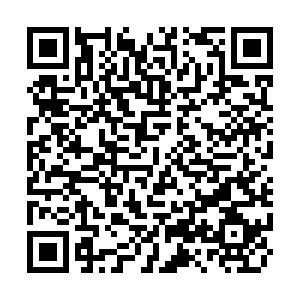Influence of airport coach service reliability on airport market share during market cultivation period
-
摘要: 基于累积前景理论, 分析了乘客对机场的选择行为习惯。根据习惯衰减原理, 得到乘客对机场的选择行为变化过程。根据市场培育期内所有乘客的选择行为变化过程, 得到机场巴士服务实施后机场市场份额的增长曲线。以无锡市2006~2009年航空出行数据为例, 分析了市场培育期内机场巴士服务可靠性对机场市场份额的影响。分析结果表明: 当开通南京禄口国际机场巴士后, 在选择上海浦东国际机场的乘客中, 习惯强度为0.52的乘客在机场巴士开通后需经历8次以上的出行逐渐转为选择南京禄口国际机场出行; 南京禄口国际机场的市场份额经历26个月的市场培育期才达到平稳值; 当机场巴士运行时间的波动幅度由±15min降低至±5min时, 南京禄口国际机场的市场培育期缩短12%;当运行时间的波动幅度由±15min上升至±25min时, 市场占有率一直在20%上下波动。南京禄口国际机场提供新服务的效果不能即刻出现, 而是随时间逐渐显现出来, 提高机场巴士的可靠性, 市场占有率才可能逐渐上升。Abstract: Based on the cumulative prospect theory, the choice behavior habit of passenger on airport was analyzed. According to the habit damping rule, the change process of choice behavior for passenger on airport was gotten. According to the change process of choice behaviors for all passengers during market cultivation period, the increase curve of market share was gotten after the airport coach service was carried out. The air trip data of Wuxi City in 2006-2009 were taken as an example, the influence of airport coach service reliability on airport market share during market cultivation period was analyzed. Analysis result indicates that after airport coach from Nanjing Lukou International Airport runs, the passengers who choose Shanghai Pudong International Airport will change to choose Nanjing Lukou International Airport after experiencing more than 8 trips when the choice habit strength equals to 0.52. The market share of Nanjing Lukou International Airport reaches the stationary value after the cultivation period of 26 months. When the fluctuation range of running time for airport coach decreases from ± 15 minto ± 5 min, the market cultivation period for Nanjing Lukou International Airport will reduce by 12 percent, when the the fluctuation range increases from ±15 min to ±25 min, the market share is around 20 percent. The effects of new service from Nanjing Lukou International Airport will not show immediately but gradually appear with time. The market share will increase as the reliability of airport coach increases.
-
表 1 计量指标
Table 1. Measuring indexes

表 2 选择行为的变化过程
Table 2. Changing process of choice behavior

-
[1] SKINNER R E. Airport choice: an empirical study[J]. Journal of Transportation Engineering, 1976, 102 (4): 871-882. [2] LIAN J I, RONNEVIK J. Airport competition-regional airports losing ground to main airports[J]. Journal of Transport Geography, 2011, 19 (1): 85-92. doi: 10.1016/j.jtrangeo.2009.12.004 [3] NEAL D T, WOOD W, LABRECQUE J S, et al. How do habits guide behavior?perceived and actual triggers of habits in daily life[J]. Journal of Experimental Social Psychology, 2012, 48 (2): 492-498. doi: 10.1016/j.jesp.2011.10.011 [4] MAYER W. The infant-export industry argument[J]. Canadian Journal of Economics, 1984, 17 (2): 249-269. doi: 10.2307/134956 [5] WINDLE R, DRESNER M. Airport choice in a multiple airport region[J]. Transportation Research Part A: Policy and Practice, 1987, 21 (6): 439-449. doi: 10.1016/0191-2607(87)90033-1 [6] PELS E, NIJKAMP P, RIETVLD P. Access to and competition between airports: a case study for the San Francisco Bay Area[J]. Transportation Research Part A: Policy and Practice, 2003, 37 (1): 71-83. doi: 10.1016/S0965-8564(02)00007-1 [7] 赵凤彩, 吴彦丽. 中国区域多机场系统旅客吞吐量预测方法研究[J]. 中国民航大学学报, 2008, 26 (6): 56-60. https://www.cnki.com.cn/Article/CJFDTOTAL-ZGMH200806013.htmZHAO Feng-cai, WU Yan-li. Method of passenger throughput forecasting in multi-airports system[J]. Journal of Civil Aviation University of China, 2008, 26 (6): 56-60. (in Chinese). https://www.cnki.com.cn/Article/CJFDTOTAL-ZGMH200806013.htm [8] ISHII J, JUN S, DENDER K V. Air travel choices in multiairport markets[J]. Journal of Urban Economics, 2009, 65 (2): 216-227. doi: 10.1016/j.jue.2008.12.001 [9] WINDLE R. DRESNER M. Airport choice in multiple-airport regions[J]. Journal of Transportation Engineering, 1995, 212 (4): 332-337. [10] WOOD W, NEAL D T. A new look at habits and the habit-goal interface[J]. Psychology Review, 2007, 114 (4): 843-863. doi: 10.1037/0033-295X.114.4.843 [11] AARTS H, VERPLANKEN B, KBIPPENBERG A V. Habit and information use in travel model choice[J]. Acta Paychology, 1997, 96 (1/2): 1-14. [12] KLOCKNER C A, MATTHIES E. How habits interfere with norm-directed behavior: a normative decision-making model for travel mode choice[J]. Journal of Environmental Psychology, 2004, 24 (3): 319-327. doi: 10.1016/j.jenvp.2004.08.004 [13] HIRAGUCHI R. The overlapping generations model with habit formation: a comment[J]. Journal of Economic Dynamics and Control, 2008, 32 (12): 4016-4017. doi: 10.1016/j.jedc.2008.03.004 [14] JABER M Y, KHER H V. Variant versus invariant time to total forgetting: the learn-forget curve model revisited[J]. Computers and Industrial Engineering, 2004, 46 (4): 697-705. doi: 10.1016/j.cie.2004.05.006 [15] OUELLETTE J A, WOOD W. Habit and intention in everyday life: the multiple processes by which past behavior predicts future behavior[J]. Psychological Bulletin, 1998, 124 (1): 54-74. doi: 10.1037/0033-2909.124.1.54 [16] VERPLANKEN B, ORBELL S. Reflections on past behavior: a self-report index of habit strength[J]. Journal of Applied Social Psychology, 2003, 33 (6): 1313-1330. doi: 10.1111/j.1559-1816.2003.tb01951.x [17] KAHNEMAN D, TVERSKY A. Choices, values, and frames[J]. American Psychologist, 1984, 9 (4): 341-350. [18] 赵凛, 张星臣. 基于"前景理论"的先验信息下出行者路径选择模型[J]. 交通运输系统工程与信息, 2006, 6 (2): 42-46. https://www.cnki.com.cn/Article/CJFDTOTAL-YSXT200602008.htmZHAO Lin, ZHANG Xing-chen. A prospect theory-based route choice model of traveler with prior information[J]. Journal of Transportation Systems Engineering and Information Technology, 2006, 6 (2): 42-46. (in Chinese). https://www.cnki.com.cn/Article/CJFDTOTAL-YSXT200602008.htm [19] GLAZE J A. The association value of non-sense syllables[J]. Pedagogical Seminary and Journal of Genetic Psychology, 1928, 35: 255-269. [20] JABER M Y, BONNEY M. Production breaks and the learning curve: the forgetting phenomenon[J]. Applied Mathematical Modelling, 1996, 20 (2): 162-169. [21] 黄宇菲, 汪应洛. 基于学习遗忘曲线模型的员工生产率研究[J]. 管理学报, 2011, 8 (9): 69-75. https://www.cnki.com.cn/Article/CJFDTOTAL-GLXB201109011.htmHUANG Yu-fei, WANG Ying-luo. Study on worker productivity with learn forget curve model[J]. Chinese Journal of Management, 2011, 8 (9): 69-75. (in Chinese). https://www.cnki.com.cn/Article/CJFDTOTAL-GLXB201109011.htm -





 下载:
下载:








